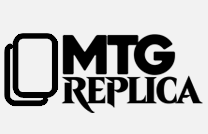
MTGreplica breaks down who benefits most from MTG counterfeit discussions and why casual players find them useful.
Understanding the Controversy Around Counterfeits
Conversations about Magic: The Gathering often shift quickly when the subject of replicas or counterfeits comes up. For collectors, authenticity is untouchable—they see their cards as both game pieces and long-term investments. But for many other fans, the game itself matters far more than monetary value.
That is where mtg counterfeit debates get complicated. There isn’t just one type of player in the Magic community. Some buy cards to collect, some play casually at kitchen tables, while others pour their time into tournaments. As a result, different groups see counterfeits in completely different lights.
Who Gains the Most from Accessible Alternatives?
When you stop to consider who really gains from replicas, casual fans are the first group that comes to mind. Not every player can afford to spend hundreds of dollars to upgrade a Commander deck or purchase the latest Modern staples. Playgroups that allow MTGreplica alternatives give these fans a chance to stay connected to the game without facing financial pressure.
Another group that benefits are newcomers. Jumping into Magic can be overwhelming when your starting point is a market where even a single land card can cost more than entry into another hobby entirely. For them, the ability to test cards that resemble expensive originals is an on-ramp into the community. Mtg counterfeit cards in casual settings provide that bridge, making the game more welcoming for new players.
Shifting the Focus Back to Gameplay
Magic was never meant to be a contest of wallets. The spirit of the game lies in clever deck construction, card interactions, and the thrill of strategizing against opponents. Unfortunately, rising prices often overshadow that intent. Players sometimes feel excluded not because they lack skill, but because they lack funds.
By offering affordable alternatives, MTGreplica helps restore balance. When nobody at the table worries about who has the “real” copy of a card, focus returns to the plays themselves. A counterspell is just as thrilling, and a well-timed creature drop is just as satisfying—even if the cardboard came from a replica printer instead of an official factory.
Protecting Collectors While Empowering Players
Of course, the other side of the coin cannot be ignored: collectors rely on the authenticity of their cards to preserve long-term value. A thriving secondary market depends on honesty and transparency. That’s why responsible use of replicas is so important.
MTGreplica emphasizes this distinction by creating cards for personal and casual enjoyment rather than for resale. As long as replicas are not passed off as originals, collectors maintain market trust while everyday players still have an affordable way to explore the game. This respectful balance ensures both sides of the community—investors and gamers—can coexist without conflict.
Final Perspective: Worth the Debate?
At the end of the day, it’s worth asking: who is really harmed or helped by replicas? Casual players gain affordability, newcomers gain access, and communities gain broader participation. Meanwhile, collectors stay protected as long as replicas are used responsibly and never sold as genuine.
For this reason, mtg counterfeit discussions should be less about black-and-white arguments and more about context. In the right spaces, replicas expand the Magic community. In the wrong ones, they can cause confusion and harm. The key lies in honesty, transparency, and respecting where each group’s priorities lie.
